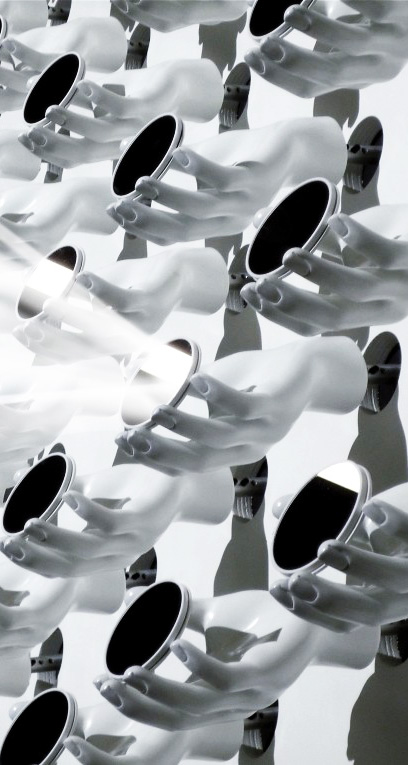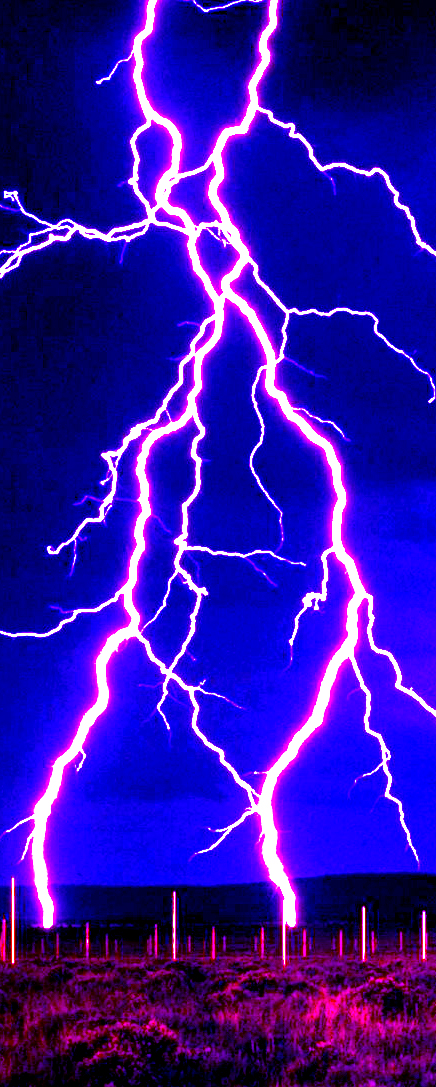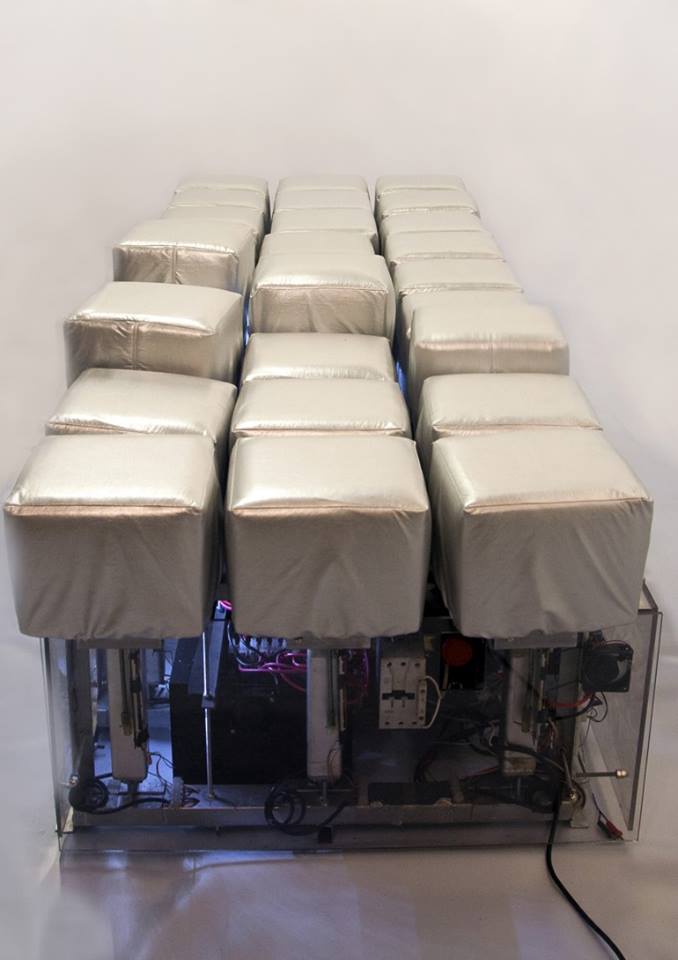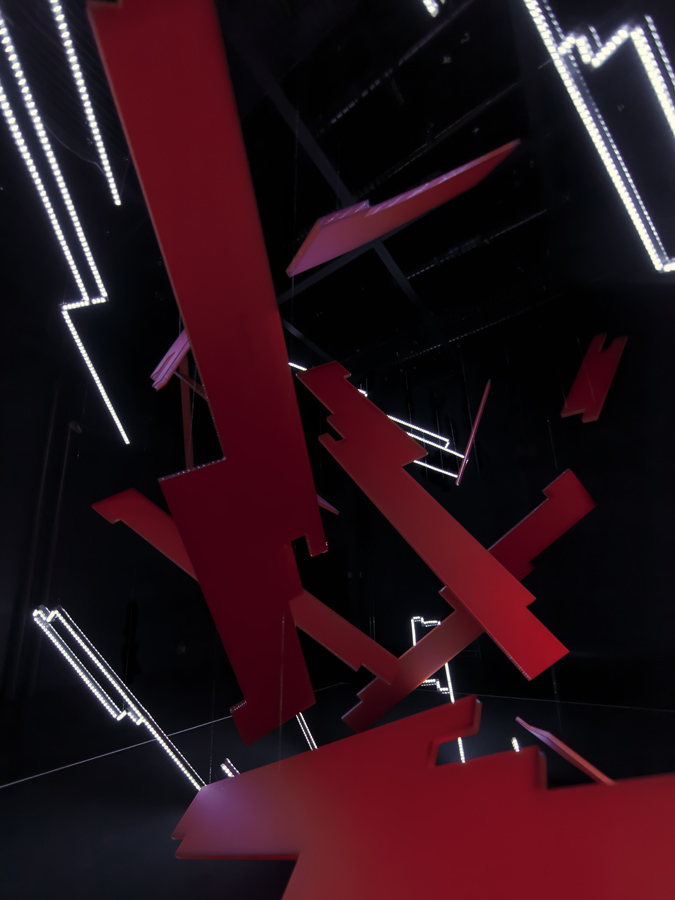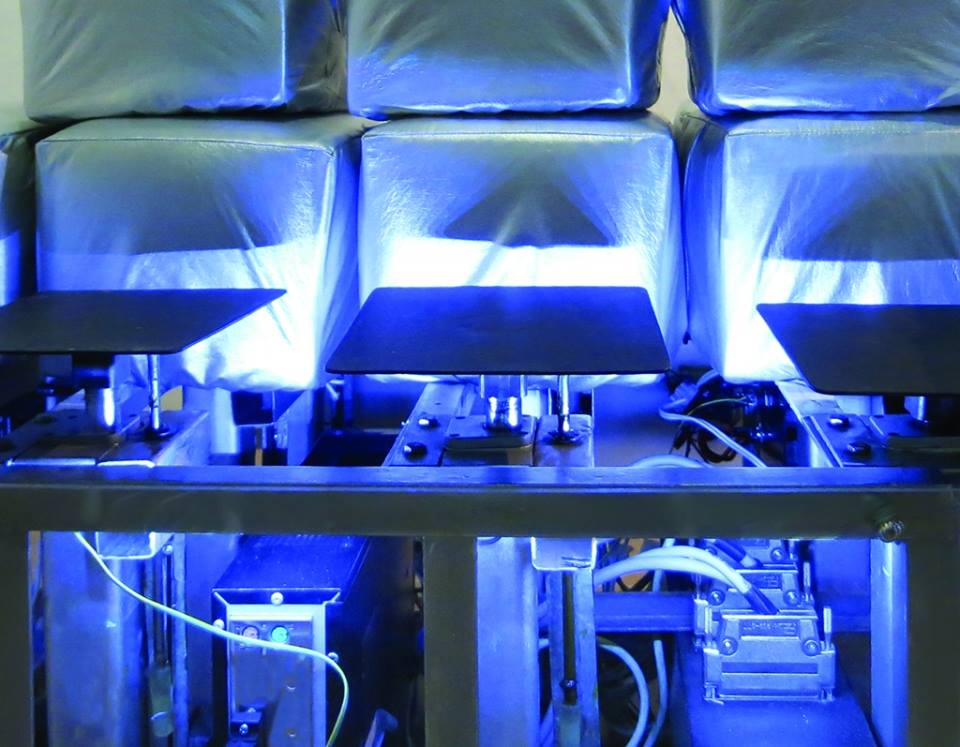
Ricardo Barreto and Maria Hsu Rocha
Martela
FILE Festival
Tactila ist eine Kunstform, deren Medium der Tastsinn (Takt) ist, der von allen anderen unabhängig ist und seine eigene Intelligenz, Vorstellungskraft, Erinnerung, Wahrnehmung und Empfindung hat. Es ist bekannt, dass Bild und Ton in der Kunst und in anderen Disziplinen Vorrang haben. Tactila findet rechtzeitig statt und kann daher aufgezeichnet werden und für spätere Ausführungen verschiedene Notationsformen haben. Deshalb wurde seine Entwicklung dank mechatronischer und Robotersysteme, die mit Maschinensprachen kompatibel sind, erst jetzt möglich. Bei der Erstellung taktiler Werke handelt es sich um eine (Takt-) Komposition, die in handgemachter Notation erstellt und auf einer Tastatur oder direkt darauf gespielt werden kann der Computer der taktilen Maschine (Roboter).
Taktile Maschinen können durch Punkte, Vektoren und Texturen mit unterschiedlichen Rhythmen und Intensitäten zahlreiche taktile Möglichkeiten bieten und an verschiedenen Ausdehnungen und Orten unseres Körpers ausgeführt werden.
Die erste taktile Maschine heißt „Martela“. Es ist ein taktiler Roboter, der aus 27 Motoren besteht, die in drei Quadrate (3 × 3) unterteilt sind, d. H. Jedes Quadrat hat 9 Motoren. Jeder Motor entspricht einem Matrixpunkt, daher haben wir 27 taktile Einheiten, mit denen der Körper des Benutzers mit verschiedenen Intensitäten berührt werden kann.
